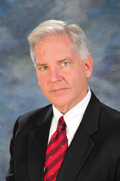Solar3D, Inc. is developing a breakthrough 3-dimensional solar cell technology to maximize the conversion of sunlight into electricity. Up to 30% of incident sunlight is currently reflected off the surface of conventional solar cells, and more is lost inside the solar cell materials. Inspired by light management techniques used in fiber optic devices, Solar3D's innovative solar cell technology utilizes a 3-dimensional design to trap sunlight inside micro-photovoltaic structures where photons bounce around until they are converted into electrons
3 Dimensional Solar Cells
Jim Nelson | Solar3D, Inc.

- The light collectors
The light collectors on the surface of the 3-D cell are engineered to gather light and guide it into the 3-dimensional structure. This is very different than the conventional 2-dimensional panel that is flat and passive—letting much of the light escape in reflection. We think of our cell as a predator of light. If light touches the surface, we grab it and keep it. - The 3-D photovoltaic structure
As opposed to the conventional structure that has just one absorbing area on the cell, the 3-D structure is multifaceted and has many absorbing surfaces. Once the light is guided into the structure by the light collectors, the light is trapped and it bounces around inside the structure until fully absorbed. - Thin absorbing regions.
In the conventional cell with thick absorbing material, when a photon strikes the cell, an electron is “knocked” loose and then has to travel a long distance to reach the metal contact wire to create a current. While traveling, many of the electrons thus knocked loose are reabsorbed into the material. Our 3-D solar cell will be fabricated with very thin absorbing regions, reducing re-absorption considerably and enhancing the current. - Below the surface electrical contacts.
On conventional cells, the electrical contacts are on the surface of the cell, creating a shadow that prevents that fraction of the light from contributing to the electrical current. By creating a cell with the electrical contacts below the surface, that loss will be eliminated.

James Nelson - President and CEO
Mr. James Nelson began his executive career 30 years ago at Bain and Company, the premier business
The content & opinions in this article are the author’s and do not necessarily represent the views of AltEnergyMag
Comments (0)
This post does not have any comments. Be the first to leave a comment below.
Featured Product

